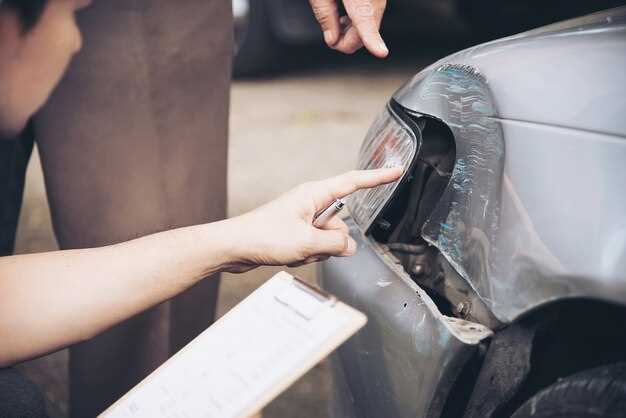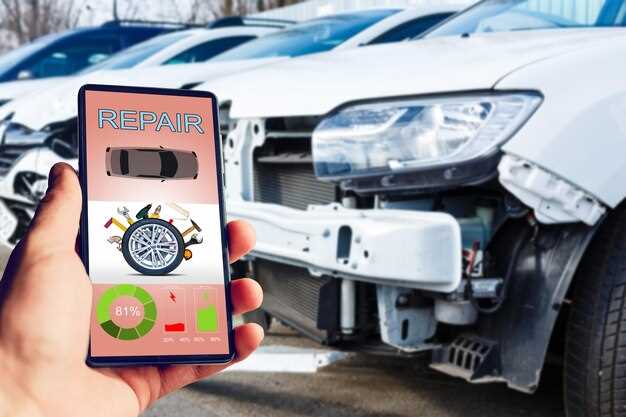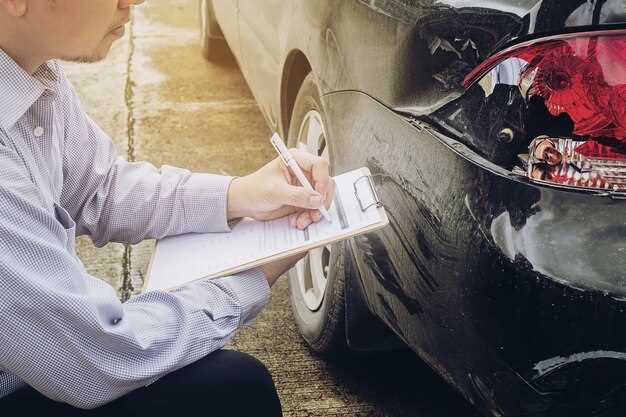
In the world of automotive accidents, understanding the various types of collision damage is crucial for anyone involved, from vehicle owners to insurance adjusters. Each type of damage conveys unique implications for repair costs, safety, and vehicle performance. This knowledge not only aids in making informed decisions during vehicle repairs but also helps in understanding the long-term effects on a vehicle’s integrity and functionality.
Collision damage can be broadly categorized into several types, including structural, cosmetic, and mechanical damage. Structural damage affects the frame or unibody of the vehicle, potentially compromising its safety. On the other hand, cosmetic damage involves issues such as scratches or dents that may not affect the car’s performance but can lead to decreased aesthetics and resale value. Understanding these distinctions is essential for evaluating the severity of an accident and determining the necessary steps for repair.
Moreover, recognizing the differences between these damage types can be instrumental in insurance claims processes. Insurance companies often categorize repairs based on the type of damage sustained, which in turn influences the claim outcome and financial reimbursement. Thus, a comprehensive grasp of collision damage types equips vehicle owners with the leverage needed to negotiate repairs and understand their rights during the claims process.
Identifying Structural vs. Cosmetic Damage in Vehicles

Understanding the differences between structural and cosmetic damage in vehicles is crucial for assessing repair needs and costs. Structural damage refers to harm affecting the vehicle’s frame, body structure, or components that are vital for maintaining the vehicle’s integrity and safety. This type of damage can compromise the vehicle’s performance, steering, and overall safety. Common indicators of structural damage include misalignment of the frame, uneven gaps between body panels, and difficulty opening or closing doors and hoods.
In contrast, cosmetic damage pertains to the exterior appearance of the vehicle without affecting its structural integrity or functionality. This type of damage mainly involves scratches, dents, paint chipping, and minor collision marks that do not disrupt the vehicle’s operational capabilities. While cosmetic damage might diminish the aesthetic appeal, it does not pose any risk to safety or performance. Identifying cosmetic damage requires a thorough inspection of the vehicle’s bodywork, looking for visible imperfections and paint inconsistencies.
It is vital for vehicle owners and potential buyers to distinguish between these types of damage during inspections. Structural damage often requires specialized repairs and can significantly impact the vehicle’s resale value. Cosmetic damage, while potentially costly to fix, usually involves less complex repairs. A professional assessment from a qualified mechanic can provide clarity on the extent of the damage and necessary repairs, enabling informed decisions for repair or purchase.
Analyzing the Impact of Collision Speed on Damage Severity
The speed at which two objects collide significantly influences the extent of damage experienced during the incident. This relationship can be understood through the principles of physics, primarily the concepts of kinetic energy and momentum. As the velocity of a vehicle increases, its kinetic energy, calculated as one-half of the mass multiplied by the square of the velocity, escalates dramatically. This squared factor implies that even a small increase in speed can lead to a substantial rise in energy transfer upon impact.
In low-speed collisions, such as fender benders, the resulting damage tends to be minor, often limited to cosmetic issues. The energy involved in these collisions is insufficient to cause significant structural compromise. However, as the speed increases, both the deformation of the vehicles and the potential for injury rise. For instance, collisions occurring at 30 mph may result in extensive crumpling of body panels and more serious passenger injuries compared to those at 10 mph.
Furthermore, the type of vehicles involved also plays a critical role. A slower impact between a heavy truck and a compact car can lead to severe consequences for the lighter vehicle due to its inability to absorb and distribute the incoming energy effectively. This disparity illustrates how collision speed, when combined with vehicle size and mass, can compound the severity of damage and injuries.
Crash test simulations consistently show that collisions at speeds above 40 mph are likely to result in catastrophic outcomes, often leading to fatal injuries for occupants. The threshold for survivability decreases sharply as speed increases. Thus, understanding the impact of collision speed on damage severity is crucial for improving vehicle safety standards and designing effective accident prevention strategies.
Effective measures to mitigate the effects of high-speed collisions include advancements in vehicle design, such as crumple zones and reinforced cabins, alongside the implementation of speed limits and traffic regulations. By acknowledging the critical role of speed in collision outcomes, stakeholders can make informed decisions that enhance road safety and reduce the likelihood of severe injuries and fatalities.
Evaluating Repair Options for Various Damage Types

When assessing repair options for different types of collision damage, it is crucial to first categorize the damage. Common categories include cosmetic, structural, and mechanical damage. Each type requires specific repair strategies and associated costs.
Cosmetic damage, such as scratches and dents, primarily affects the vehicle’s exterior appearance. Repair options often entail paintless dent repair (PDR) for minor dents and traditional bodywork for deeper scratches. PDR is typically more cost-effective and preserves the original factory finish, making it a favorable choice when possible. However, for extensive cosmetic damage, respraying entire panels or sections may be necessary, which can be more time-consuming and expensive.
Structural damage, on the other hand, impacts the safety and integrity of the vehicle. This type of damage often requires a more detailed evaluation using frame alignment tools. Repair methods may include straightening the vehicle frame or replacing damaged components. Depending on the severity, repair costs can be significant, and in some cases, the vehicle may be deemed a total loss if the repairs exceed a certain percentage of its value.
Mechanical damage, which can result from impact, often affects components like the suspension, transmission, or engine. Diagnosing this type of damage generally involves a comprehensive inspection and diagnostic testing. Repair options may vary widely, from simple replacements of minor parts to extensive engine overhauls. It is essential to consider both the safety implications and the potential long-term reliability when choosing repair options in these cases.
Additionally, the decision to repair or replace certain damaged components should take into account the vehicle’s overall value, age, and future resale potential. Consulting with a certified technician can provide valuable insights and help determine the most effective course of action for each specific type of damage.
Ultimately, evaluating repair options requires a careful balance between cost, safety, and the vehicle’s condition. Thorough inspections and understanding the nature of the damage are crucial steps in making informed decisions on repairs.

